Scotland is a beautiful country for a motorhome trip. However, there are a few things you should know and take into account…
Page Contents (click line to jump the text)
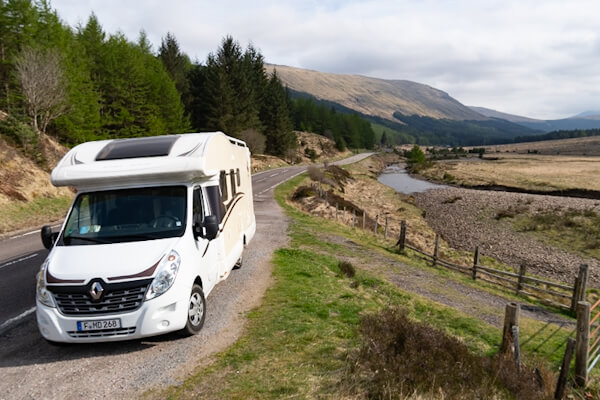
Intro and travel report
We spent just under three weeks travelling all over Scotland in our motorhome. From Ireland, where we have our second home, via Northern Ireland by ferry to south-west Scotland and then up, down, through the countryside, along the coast and back to Ireland.

We saw the Southern Uplands, the Midlands and the Highlands, the west, the east and the centre. For me, it was my fourth trip to Scotland, for my wife her third – and for our dog his first…
I had been here on my motorbike, we had been here together in a hire car and our own car, and now in our rather large motorhome.
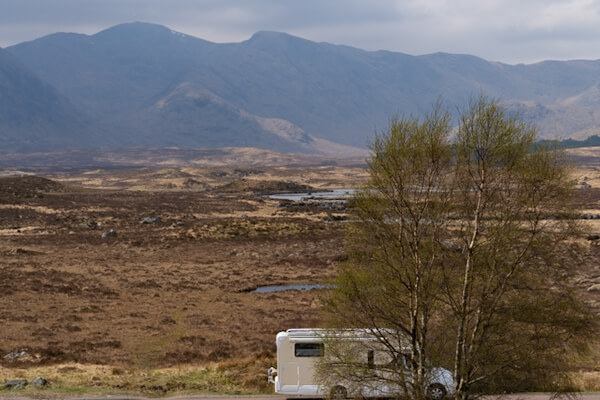
Road conditions
And this brings us to the differences: some roads in Scotland are very good, while others are very narrow and in the Highlands often even single-lane.
On a motorbike – no problem. In a car – a bit more exciting. In a motorhome: sometimes very nerve-wracking!
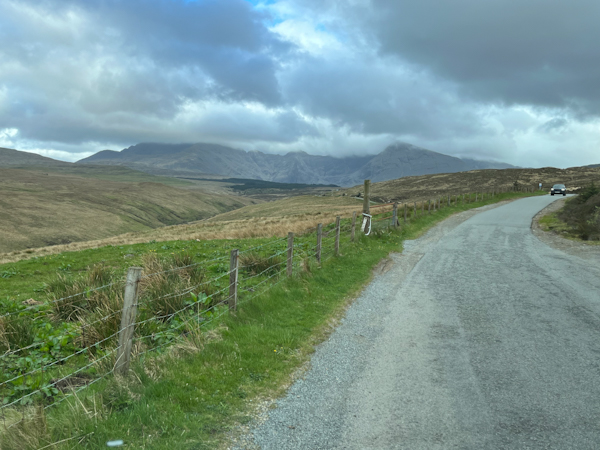
Every year, numerous motorhomes tip over in Scotland because, when swerving on narrow roads, their wheels slip into the soft road shoulder and get stuck – or tip over.
My daughter had seen this in a report and encouragingly told me about it before the trip. We didn’t tip over, but it was often very close, and our wing mirror collided with that of another motorhome – which had the same problem. Fortunately, there was no major damage.
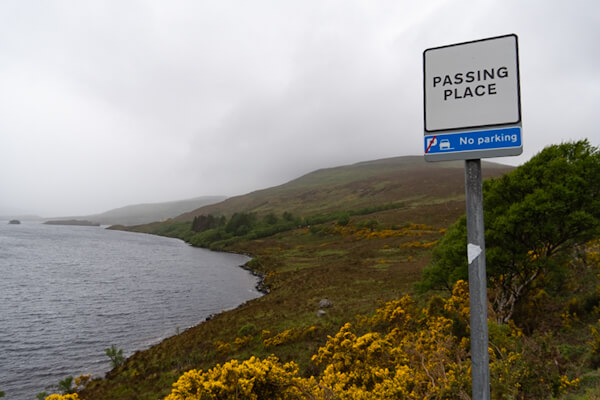
Our semi-integrated motorhome is just under 8 metres long and quite wide. If you rent or own a slimmer motorhome van, you’ll find it much easier in Scotland, and with a VW bus you’ll have no problems at all. The same applies to Ireland, Northern Ireland and England, by the way.
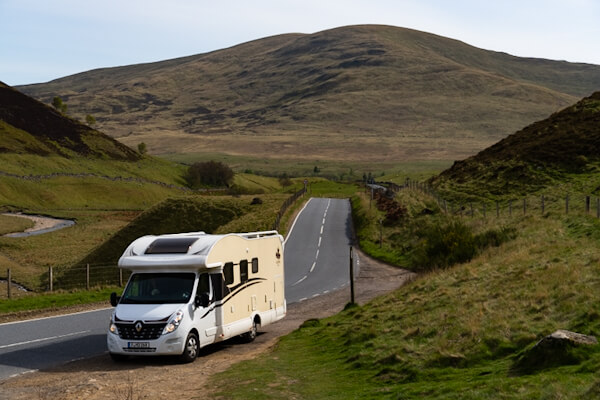
Small camping sites for camping club members
Many campsites are for club members only. There are many camping options on farms that only offer 5-6 pitches. They probably have simplified licensing or tax advantages if they do not exceed a certain size, just like B&Bs.
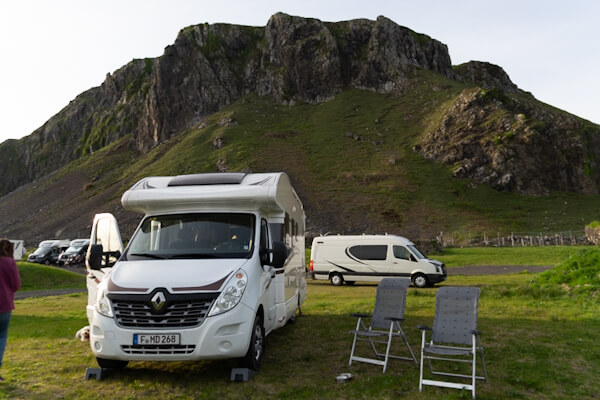
I’m not sure about the exact regulations, but they are usually exclusively affiliated with the Scottish, English or British camping club.
As non-club members, we were turned away several times. And no, no one was interested in our ADAC membership.
When in doubt, it helps to call ahead and ask.

Data entries in camping apps are often out of date
Not every small campsite keeps its online entries up to date, or is even interested in doing so. We have often found that information was incorrect or out of date, such as opening hours.
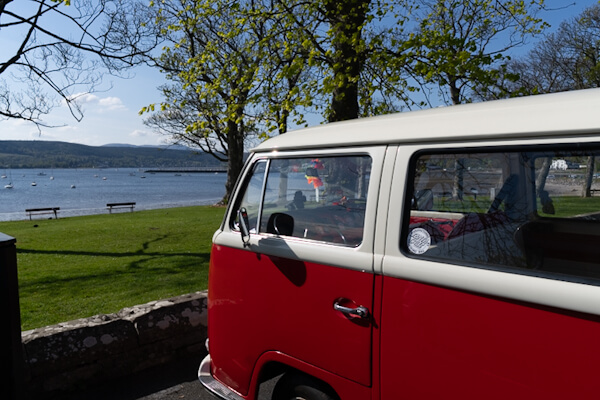
Speaking of opening hours: many campsite offices close at 5 p.m. If you arrive later, you can call or simply drive in and pay the next morning, or… there are many options.
If you want to be on the safe side, be sure to call ahead and have the code for the entrance gate or whatever confirmed by email.
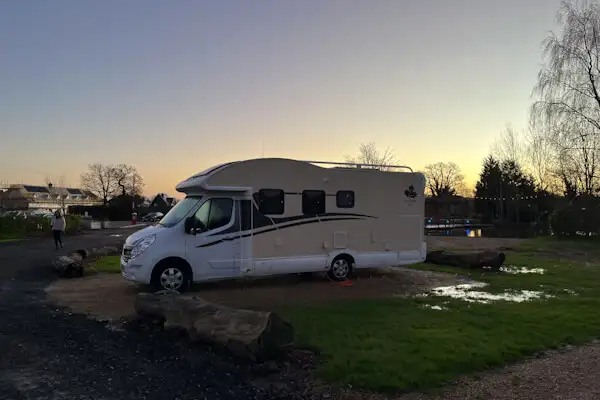
Online bookings do work – sometimes
Some campsites are great: you book online via their website and immediately receive a friendly reply with everything you need to know.
If you don’t receive a reply within a few hours, it’s best to call again.
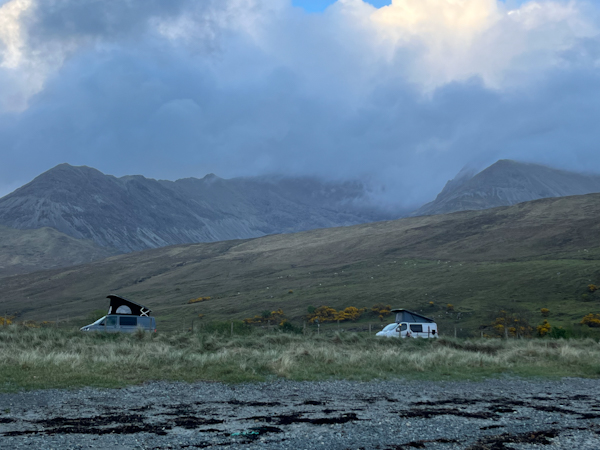
It may be that your booking system attempt didn’t reach anyone. This is especially true if you’re not booking via the campsite’s website, but via an app.
We’ve gotten into the habit of only booking via the campsite’s website and, if in doubt, calling instead.
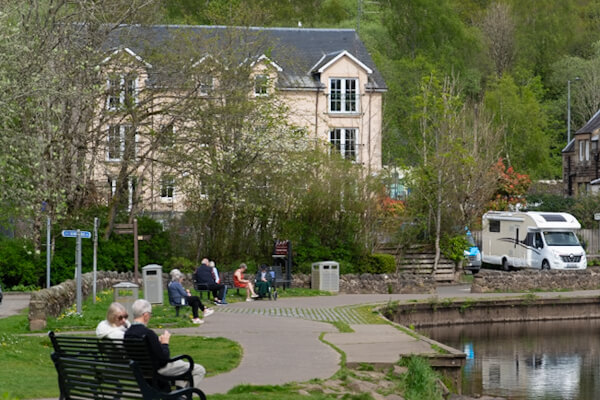
Camping apps are useful – sometimes
I had four different camping apps on my smartphone, all well-known names in the industry (park4night.com and others). I deleted them all.
After a few frustrating attempts, we decided to look for the nearest interesting campsite on Google Maps and then book via the website, call them or simply drive there.
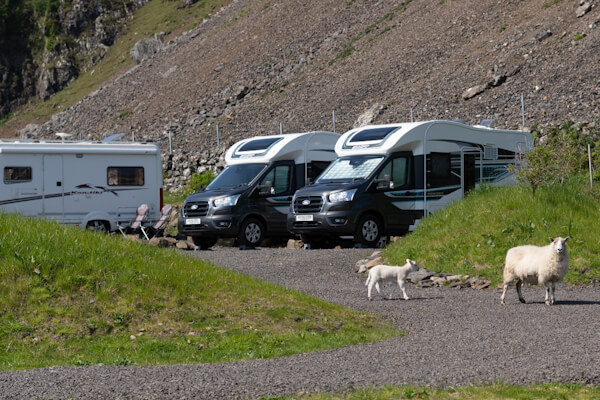
I know many fans of apps will disagree, but we found this to be the most practical solution for us.
We used campsites or sometimes official motorhome parking spaces. In Britain and Ireland, it is also possible to stay overnight for free, usually in pub car parks.
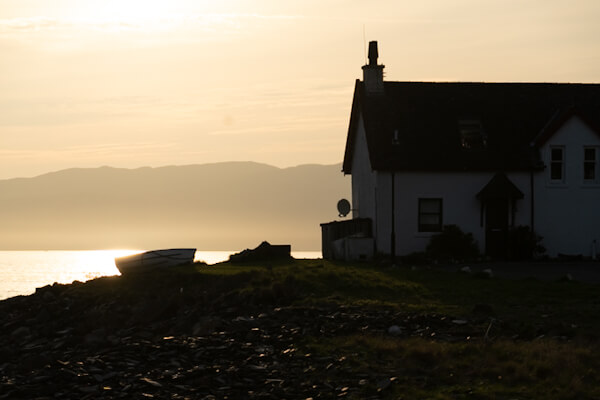
These are just parking spaces without any facilities, and the understanding is that you will at least have a meal in the pub. You can find the options via the britstops.com app.
I had a look at the app and they wanted £60 (I think that was the price) from me, which I didn’t pay. But if you can stay for free for two weeks for £60, then that’s cheap! It’s certainly a good idea for many, but we didn’t use it.
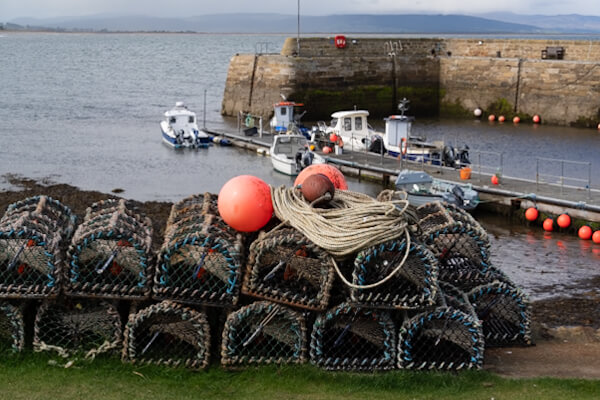
Wild camping in Great Britain (or Ireland)
On the British and Irish islands, wild camping is initially just as permitted as in Germany – namely not at all.
However, there are a few places where it is permitted, perhaps in exchange for a small donation to the local community. A sign on site explains the procedure. We have stayed overnight like this before – and made a donation. You can often find these at small fishing or marina harbours.
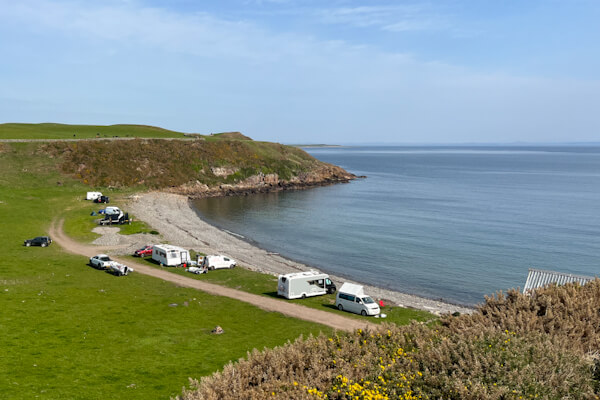
And then there are places where staying overnight in a camper van is more or less tolerated, as long as you don’t leave any rubbish behind. However, you can never be sure…
We have heard that wild camping is more strictly controlled in England than in Scotland. So it is not recommended.
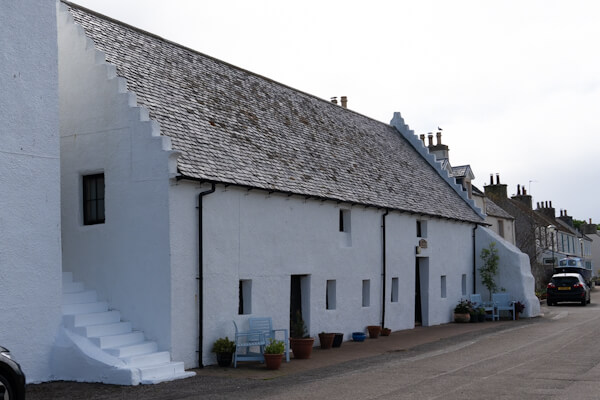
We have often seen compact campervans with their roofs raised and windows darkened parked somewhere in the Highlands. It probably doesn’t bother anyone there. We didn’t do that in Scotland with our large motorhome.
In Ireland, by the way, it is very common for campers to park on beach car parks in the summer – provided there is no explicit prohibition sign. But officially, wild camping is not allowed there either.
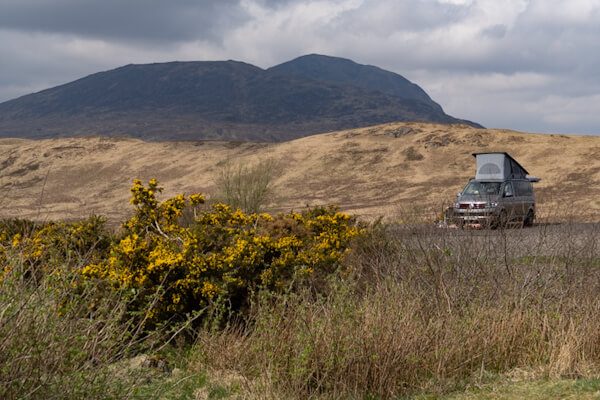
Pricing and conditions of campsites
Scotland is not cheap, just as England and Ireland are not cheap. You can easily spend £60-100 for a night at a campsite, especially in areas where the main tourist routes and important sights are located.
But if, after a long day on the coast, you drive a few kilometres inland to find a smaller, simple campsite, you can get a great night’s sleep for £25. These sites are usually less busy and quieter.

Overall, we were very lucky with our sites, even the simple ones. The condition and cleanliness of the sanitary facilities were mostly fine, the electricity and water worked, everything was good.
And the most important thing for a relaxing holiday: we were almost always able to sleep well because it was quiet, or at least became quiet in the evening – almost always.
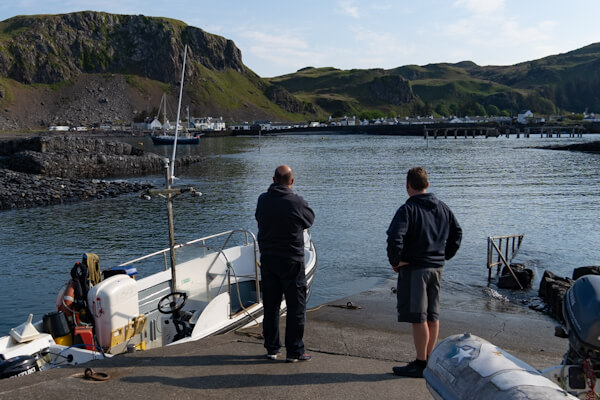
The Highlands are not lonely at all
When people imagine the Highlands, they usually think of wild, untouched and, above all, lonely mountain landscapes.
This is true in the winter months, but not in the summer. In summer, large numbers of English, European and international tourists flock to the famous mountain region.
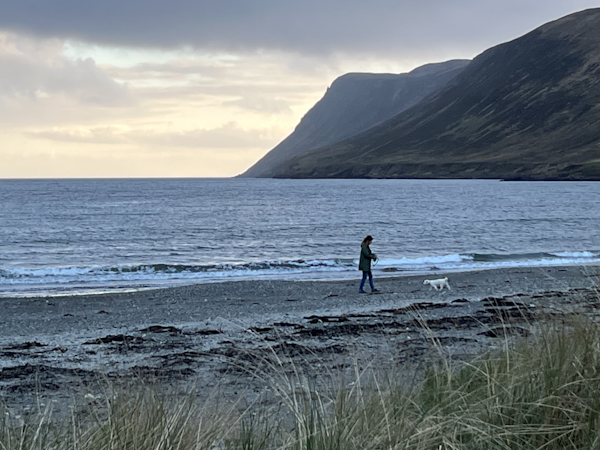
This means that the main tourist routes and heavily marketed attractions can get quite crowded. These definitely include Edinburgh, Loch Lomond, Glencoe, Inverness, the Isle of Skye and the Glenfinnan Viaduct.
It is much more relaxed to travel before or after the school holidays, i.e. before mid-June and after mid-August.

Travel weather in Scotland
We were incredibly lucky with the weather this time: mostly sunshine, or at least dry weather and relatively little rain.
But in Scotland, it can sometimes be very different. The west coast, for example, gets about twice as much rainfall as the east coast. This is also the case in Ireland, by the way. This is because rainy weather usually comes from the west and rains down over the mountains.
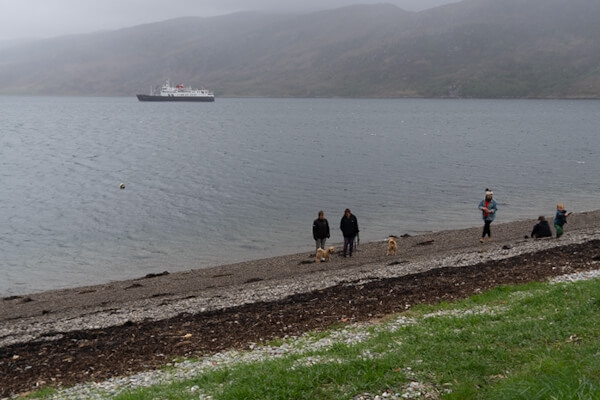
If you are travelling in the western Highlands, it can be unpleasant for days on end, because in addition to the rain, there can also be a lot of wind on the Atlantic coast.
The best thing to do is to be flexible: we completely changed our route due to the approaching rainy weather and drove east from the Highlands, travelling along the east coast, only to return to the Highlands a few days later.
The detour was worth it, as we stayed mostly dry while the rain actually fell in the Highlands.
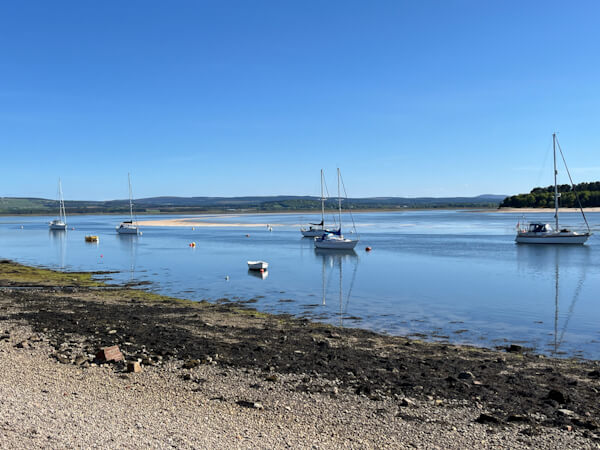
Best time to visit Scotland
In general, and also for motorhome tours, I find late spring and early summer, and then late summer and early autumn, to be wonderful times to visit the British and Irish Isles.
This also applies to motorhome camping in the Scottish Highlands. Not only because there are no school holidays then, but also because of the mostly pleasant climate: not too cold, not too warm, not too wet.
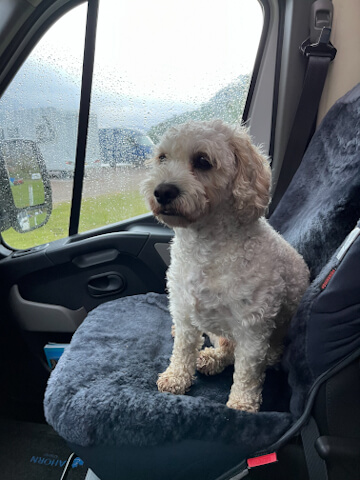
Statistically speaking, there is less rainfall in April and May than in August! In April, however, it can still be a bit cold and wintry in the high mountains of the Highlands, but for southern Scotland, Edinburgh, Stirling, Glasgow or the east coast, it is a very nice month.
And mid-August to mid-September can also be very nice.
This time, we were travelling in Scotland from the end of April to mid-May and had mostly dry and often very sunny weather.
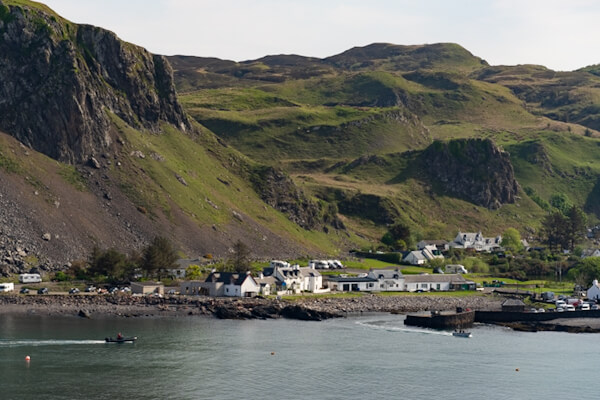
Food and drink in Scotland
Yes! Definitely! The food in Scotland is sooo good. Especially in medium-sized and larger cities, there is something for every taste, from traditional Scottish to Asian, European or international cuisine.
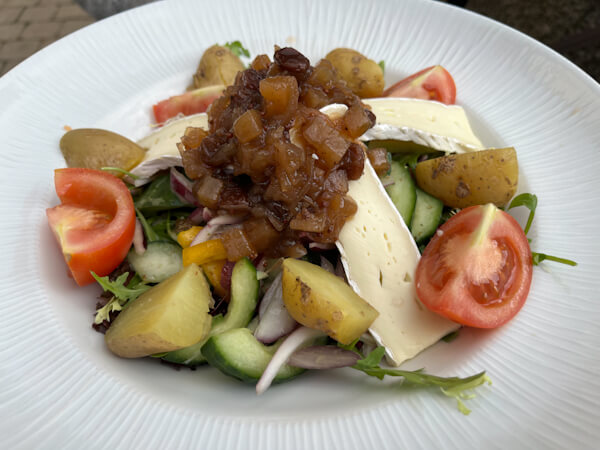
Scottish fusion cuisine is particularly delicious: traditional dishes with fish or meat, but lighter and healthier, with more light and healthy vegetables and lighter sauces.
In the countryside, the cuisine is more traditional Scottish: hearty dishes and plenty of them.
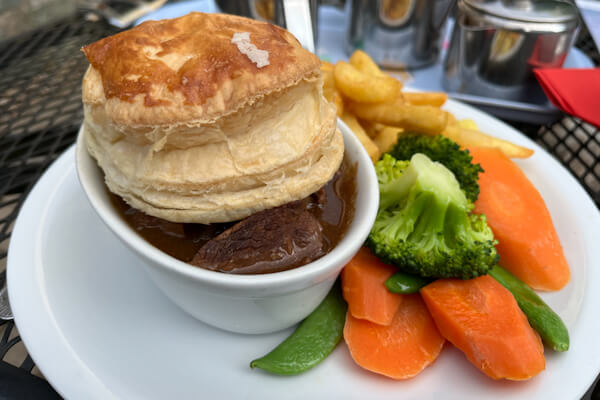
Entry into Scotland, ID, currency and money, electricity, gas
You can find the current travel regulations for Scotland and Great Britain on the website of the German Foreign Office (see: https://www.auswaertiges-amt.de/de/reiseundsicherheit/grossbritanniensicherheit) or here: https//www.gov.uk.
Important to know: Even though EU citizens do not need a visa for the United Kingdom, there is now an electronic pre-registration system called ETA. You must apply for this online in advance and it is then valid for two years. You can find more information about this via the links above.
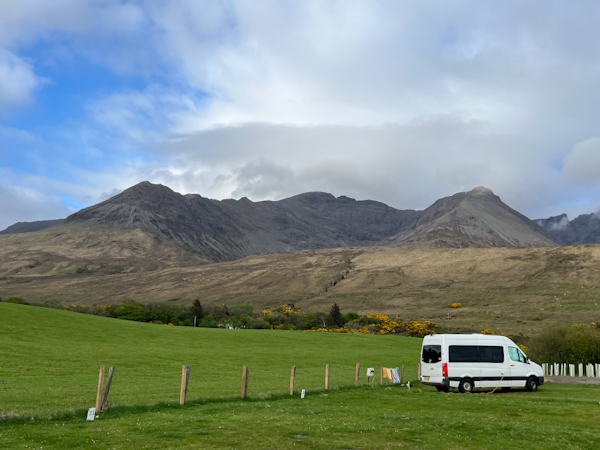
Incidentally, you should bring your passport with you; an identity card is not sufficient. And if you are travelling with a dog, as we did, you will need an EU pet passport with valid vaccinations and worming treatment. You can find everything you need to know about this here, for example: https://www.hundeurlaub.de/einreisebestimmungen/grossbritannien.
The currency of Great Britain is the pound sterling. This also applies to Wales, Northern Ireland and Scotland.
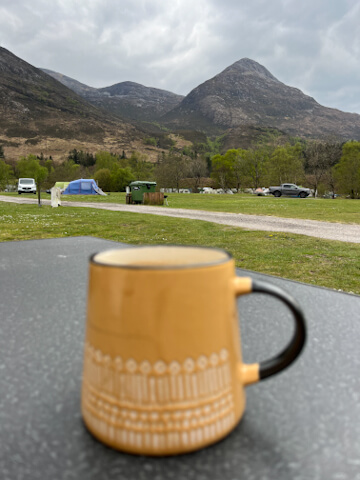
Paying with standard Maestro or Visa cards is usually no problem. Nevertheless, you should withdraw some cash from an ATM, as occasionally you can only pay in cash – meaning pounds sterling.
The electricity in Great Britain and Scotland is 230V, as on the European continent. However, the sockets are British. So you will need a travel adapter for household sockets.
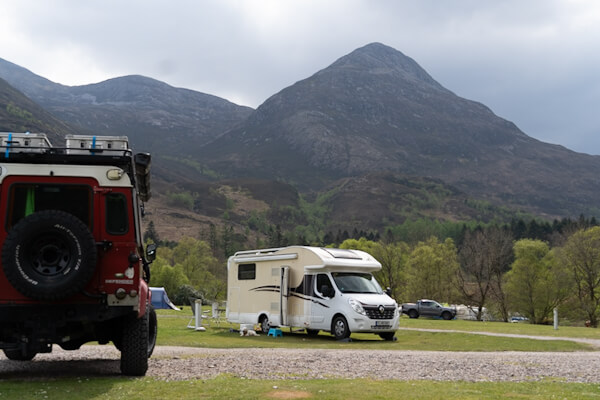
However, we were able to connect our motorhome everywhere at the campsites with our European CE cable.
Gas bottles, however, have different connections. If in doubt, buy an adapter set from a specialist retailer before you travel.

Left-hand traffic and road conditions
Left-hand traffic applies throughout the British Isles and Ireland, including Scotland. We have been driving German cars on the islands for years and have become accustomed to it.
When driving a motorhome, turning left at a bend in the road is particularly difficult because I simply cannot see the road on the right. My wife always helped me with this.
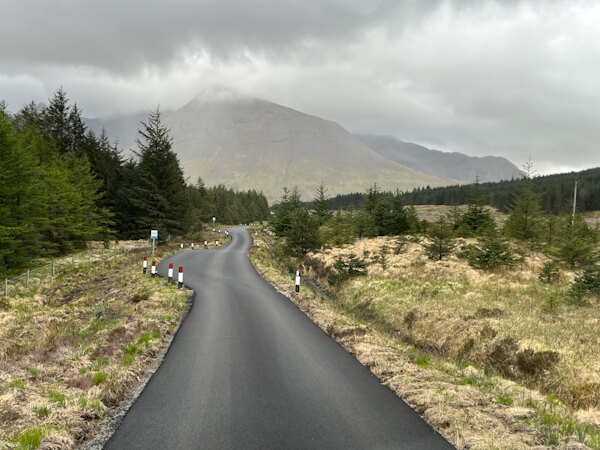
Alternatively, you can always drive as straight as possible towards the junction, even if the road is already turning left. An additional blind spot mirror on the right-hand mirror is probably even better.
However, what can really be a challenge with a motorhome are the often very narrow roads, some of which become single-lane roads with individual passing bays.

It was often really difficult on the last two kilometres to the remote beach or in the west of the NC500, i.e. small roads in the Highlands.
Watch out for the soft road shoulders, because you can quickly leave the asphalt with your left tyres and then sink in.
Incidentally, all of this also applies to England, Wales, Northern Ireland and Ireland.
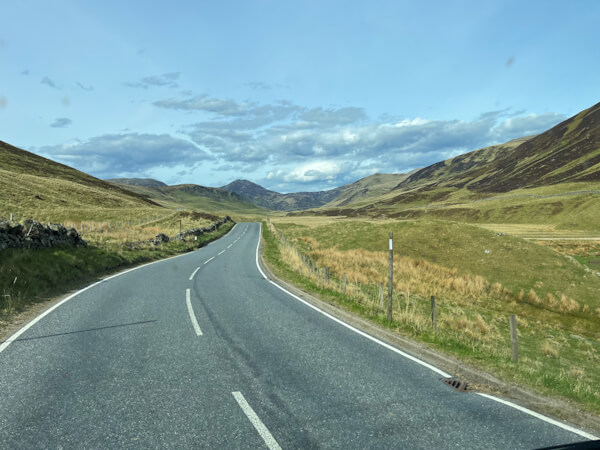
Renting a motorhome
We saw many rental motorhomes in Scotland – easily recognisable by the rental companies’ logos. You can easily find them online. Bunk Campers and Indie Campers in Edinburgh are just two of many.
Make sure you take out all the additional insurance you need, as it’s easy to damage a camper in Scotland. Stone chips and punctures can also happen.
Due to the narrow roads, a narrow campervan has a clear advantage over a larger, wider motorhome. If you can, narrow is better!!!
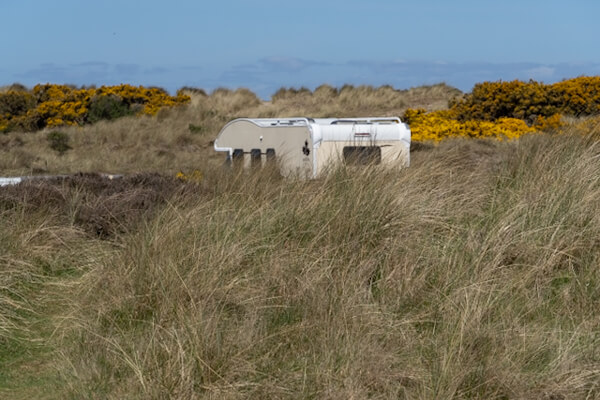
Conclusion
Scotland is an incredibly beautiful country! And it’s a great place for a holiday in a motorhome or campervan.
If you take care to avoid very narrow and single-lane roads when planning your route, nothing will stand in the way of a relaxing holiday in your caravan. How can you tell? Satnavs are extremely stupid, so they’re useless in this regard.
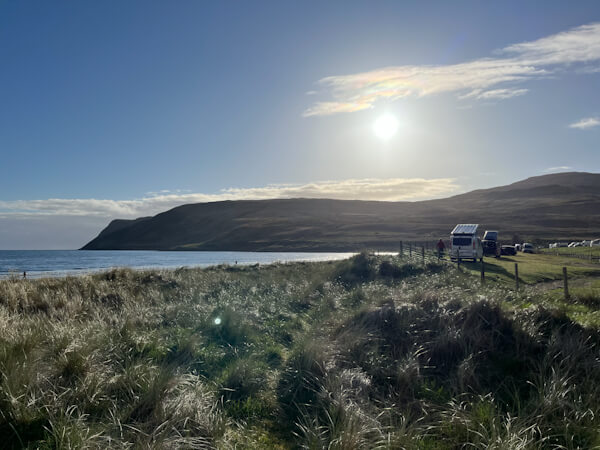
Google Maps is better: scroll into the satellite view until you can see individual cars and lanes, or switch on Street View and look at the photos. In remote areas, some N = National Roads quickly turn out to be tiny little roads.
This also means: take your time to look at the planned route in advance! I often failed to do this, and it usually ended up being stressful at some point…
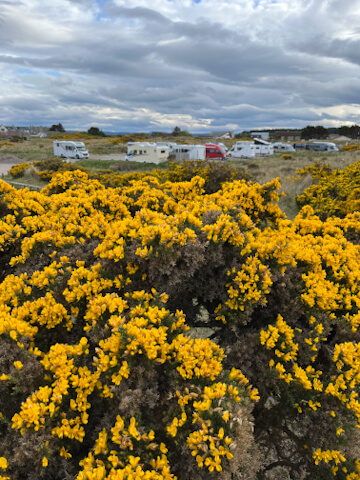
But back to what makes motorhome camping in Scotland so special: impressive, magical mountains, stunning coastlines, wonderful cities and towns, miles of beaches, charming harbours and green hills dotted with numerous castles, palaces and monasteries. Add to that delicious food and drink and many pleasant campsites.
What more could you want? Have fun in Scotland!
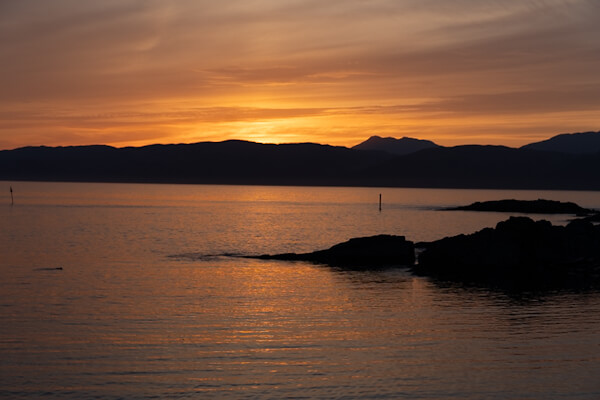
More interesting articles for you…
ON THE EDGE: DUNNOTTAR CASTLE
NORTH OF INVERNESS…
MAGICAL GLENCOE VALLEY
Image credit cover image: Campsite on the isle of Skye (photo: Ulrich Knüppel-Gertberg)